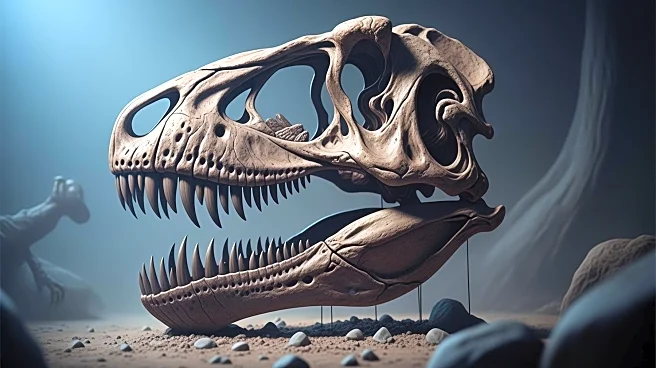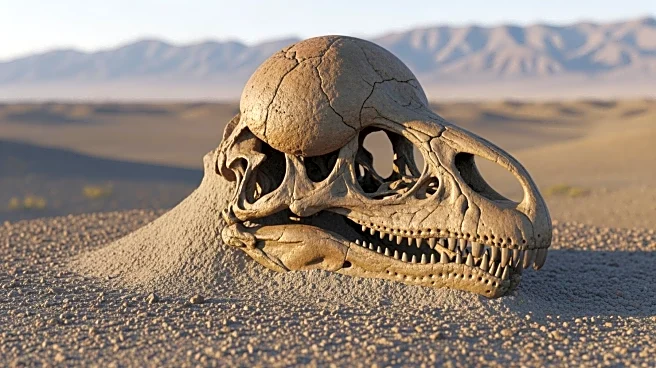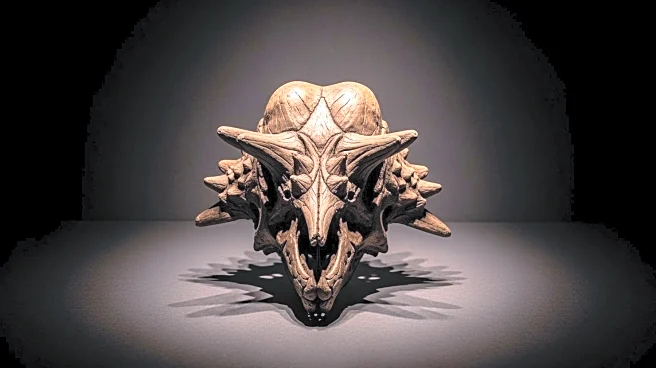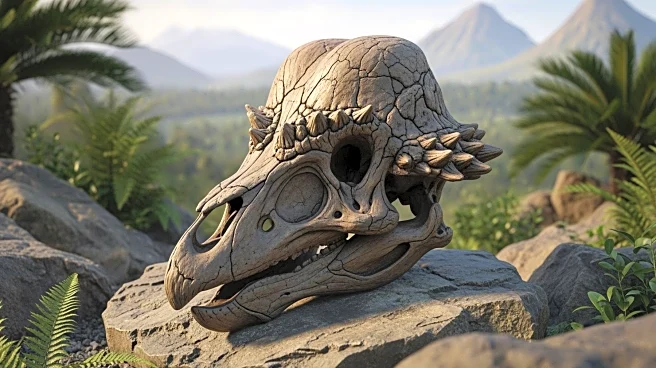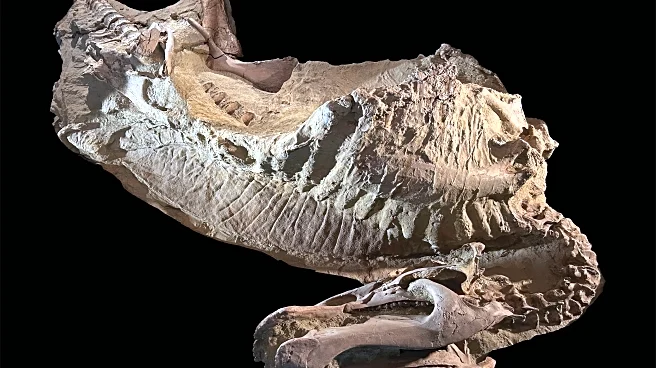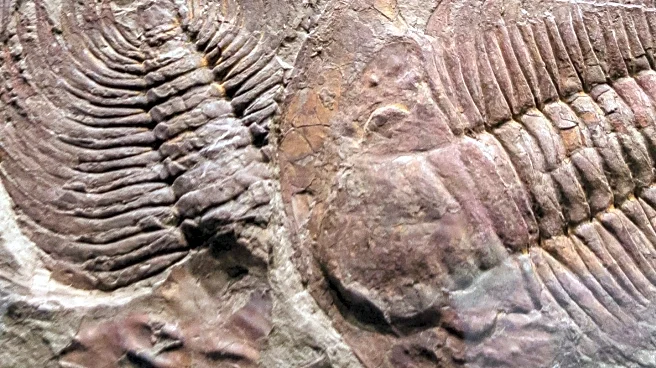What's Happening?
An international team of paleontologists has identified a new dinosaur species named Khankhuuluu, believed to be the closest-known ancestor of the giant Tyrannosaurs. The discovery, led by Jared Voris
and Dr. Darla Zelenitsky from the University of Calgary, has been published in Nature. Khankhuuluu lived approximately 86 million years ago and was a medium-sized, fast-moving predator. This species provides insight into the evolutionary transition of Tyrannosaurs from small predators to apex predators. The name Khankhuuluu, meaning 'prince of dragons,' reflects its position in the Tyrannosaur family tree as a precursor to the 'king,' Tyrannosaurus rex. The fossils were unearthed from the Bayanshiree Formation in Mongolia, initially studied in the 1970s, and later re-examined by Voris in 2023.
Why It's Important?
The discovery of Khankhuuluu is significant as it offers a deeper understanding of Tyrannosaur evolution, particularly their migration and diversification between Asia and North America. This research suggests that large Tyrannosaurs first evolved in North America following an immigration event from Asia. The study challenges previous beliefs about the frequency and extent of these migrations, indicating they were rarer and more limited. Understanding the evolutionary journey of Tyrannosaurs can provide insights into the broader patterns of dinosaur evolution and migration, impacting paleontological theories and research.
What's Next?
The research team plans to study earlier and less-understood ancestors of Tyrannosaurs to fill in the remaining gaps of their evolutionary story. This future research could further illuminate the migration patterns and evolutionary adaptations that led to the rise of Tyrannosaurs as apex predators. Continued exploration and analysis of fossil records may reveal new species and evolutionary links, enhancing our understanding of dinosaur history and evolution.
Beyond the Headlines
The discovery of Khankhuuluu highlights the importance of international collaboration in paleontology, as researchers from different countries contribute to uncovering and interpreting fossil evidence. It also underscores the significance of revisiting and re-evaluating previously studied fossils with new technologies and perspectives, which can lead to groundbreaking discoveries and revisions of scientific understanding.
